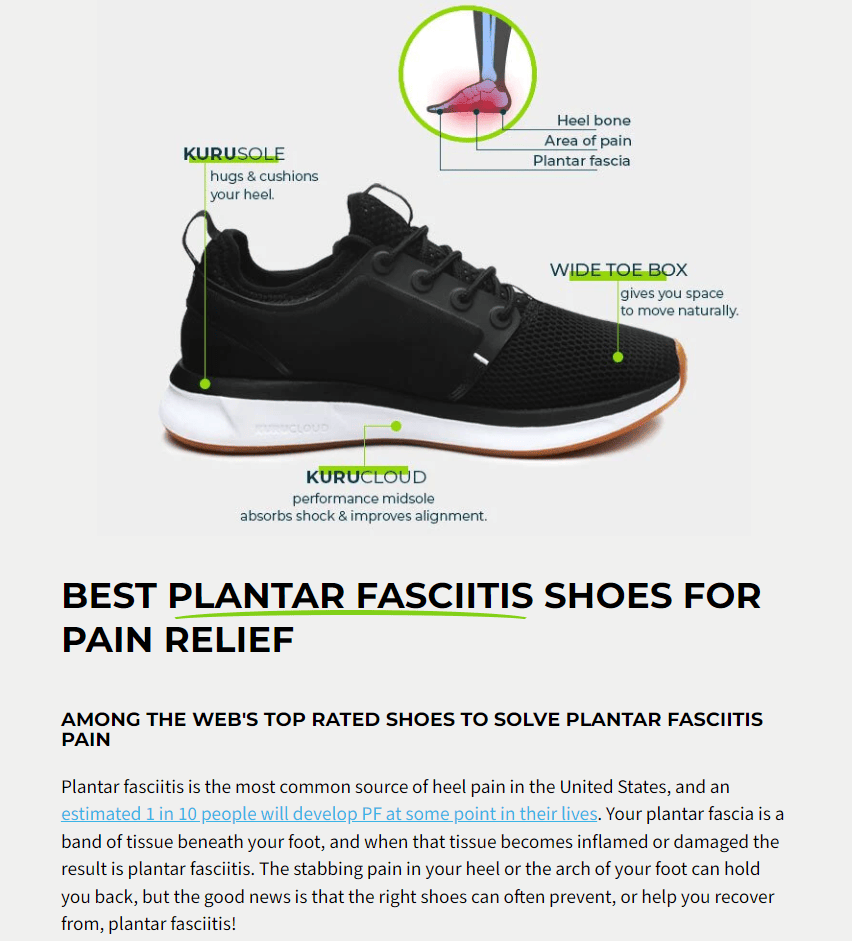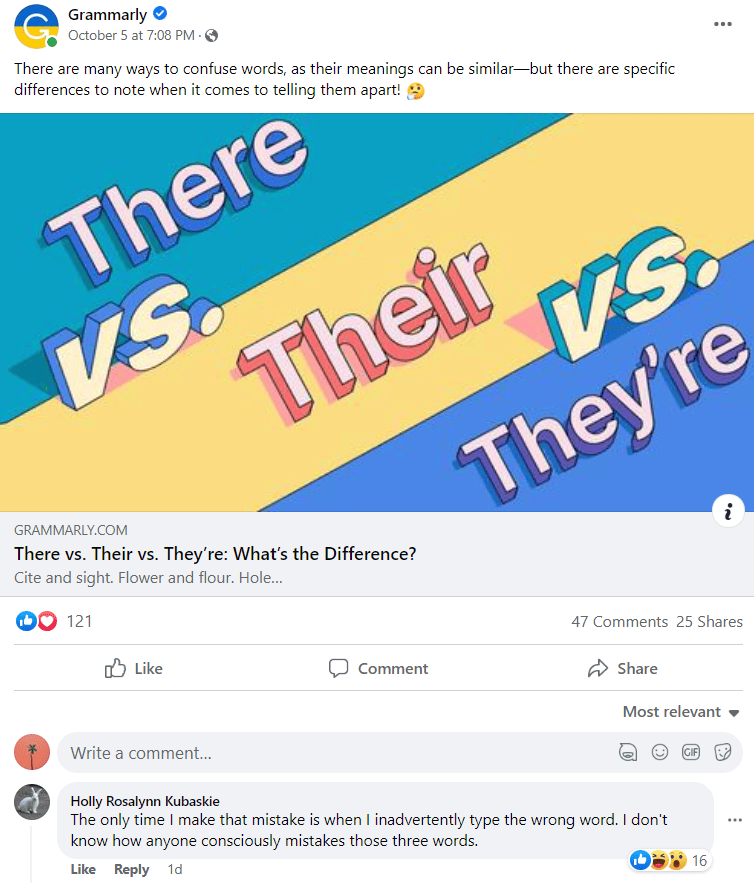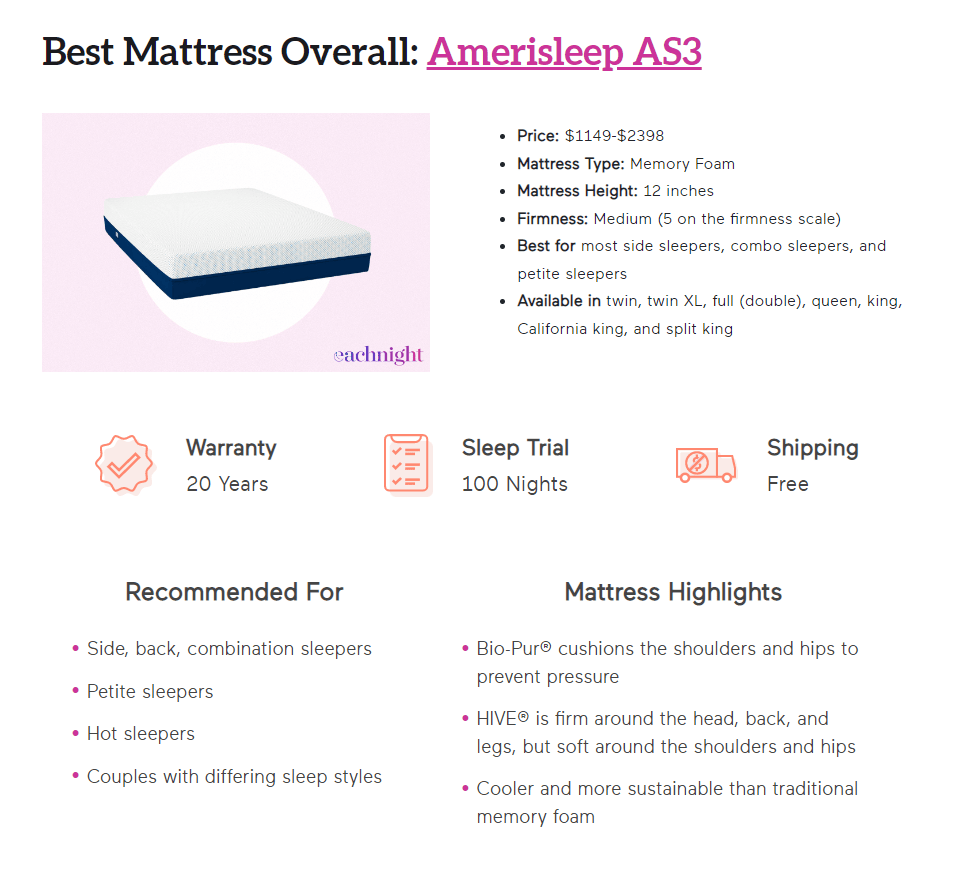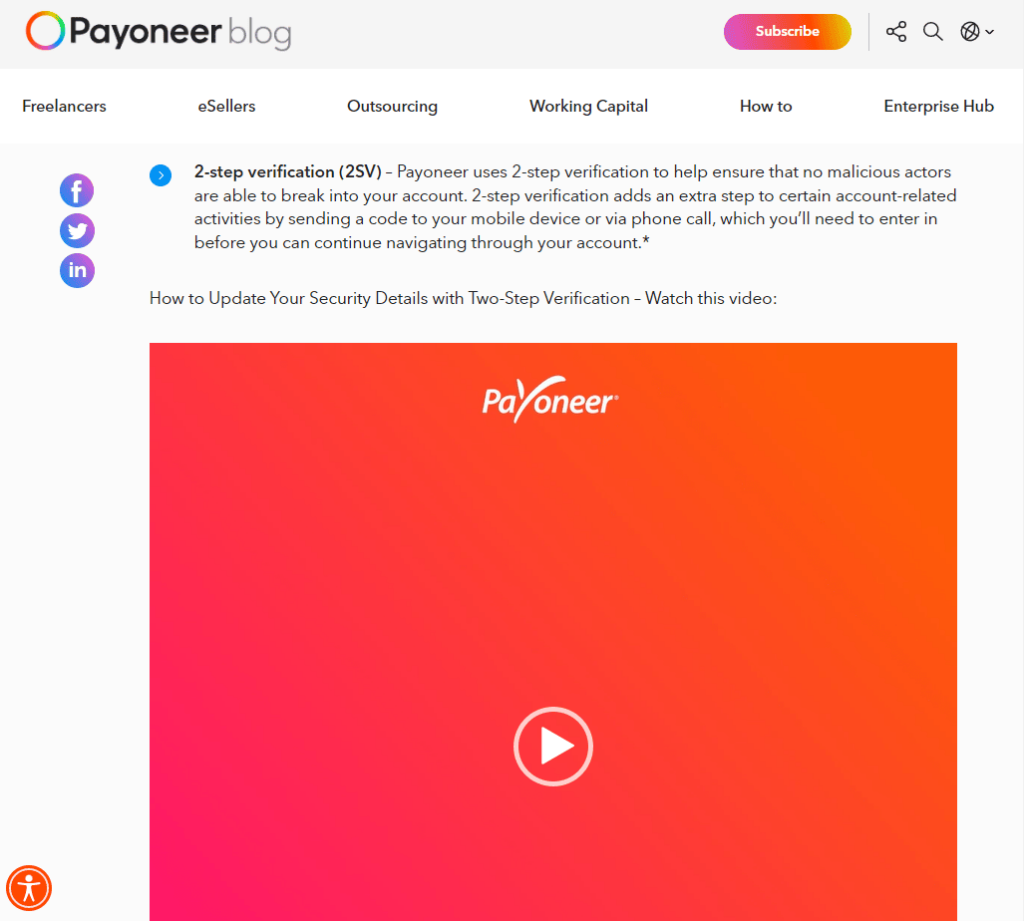8 Tactics to Level Up Your Content Marketing Game in 2024
Since you’re reading this, you probably already understand the importance of content and know what it can do for your business.
But the trick with content marketing (and something eager entrepreneurs often overlook) is that you can’t just create any old content and hope it works out. You’ll need a comprehensive content marketing plan that will ensure your efforts can bring the results you’re after. Armed with a solid content marketing strategy, you can establish your brand as an industry authority, widen your reach, and inspire action.
With that in mind, we’ve rounded up some of our best content marketing advice. Read on to learn about eight advanced tactics that you can use to successfully level up your content marketing game.
1. Get Hyper-Niche with Known Customer Pain Points
Diving deep into what truly matters to your customers is how you position yourself as a trustworthy brand that can actually make a difference in its customers’ lives.
Addressing your customers’ paint points with great detail is how you achieve that level of brand authority. People need to trust that you’re an expert even in the most nuanced aspects of your niche.
In order to accomplish this through content, there are a few important points that you’ll want to focus on:
Get to know your audience
First, you need to do some thorough research on specific pain points that your customers struggle with. You’ll discover that they are constantly seeking solutions to complex problems. This is your chance to learn what you can address in your content to make it relevant and useful.
Connect your customers to your product
A big part of your content should focus on explaining why your product aligns with your customers’ pain points. You want to present real, solid reasons to draw them in.
Don’t hold back on detail
Even when you’re elaborating on a hyper-niche topic, your content needs to be extensive and answer all of your readers’ questions. You don’t want to create the impression that you’re just creating content for the sake of it.
Bring real research
Back up your claims with verified data. Whenever you can, provide sources and stats. The link between pain point and product must be very well justified.
KURU Footwear is an excellent example of how to do this right. They have several content pieces that align their products with incredibly specific conditions affecting their target audience’s feet. In this example — a post on shoes for plantar fasciitis — the condition is given an incredibly thorough breakdown. Thus, it gives the brand ample opportunity to insert a meaningful reference to its product.

Source: Kurufootwear.com
2. Publish High-Quality Evergreen Content
A good content marketing strategy entails occasionally publishing pieces that offer genuine value no matter how much time passes. Of course, that’s hard to achieve. But with the right tactics, producing even a couple of evergreen content pieces can turn your brand into a staple within your niche.
There are dozens of ways to craft a blog post or an article that will perform well for years or decades. Let’s summarize them here:
Identify content topics that have the potential to become evergreen
Evergreen content always reflects the needs of your clients. Research what your customers are discussing online and create topics that elaborate on those questions. You can also examine your competition, discover topics that generate traction but are poorly written or not entirely explored, and work on improving them in your content. Some great ideas include guides and how-to articles.
Focus on the right keywords
Figuring out which keywords in your niche are performing well over long periods of time is a good indicator that if you focus on those in your content, you get a chance at scoring an evergreen piece. Google Trends is the best free tool to utilize for this purpose.
Speak with authority
To ensure that you become a trusted voice and that customers turn to you whenever they need solutions, you need to channel authority through your content. You can do this by creating well-researched content that makes measurable claims and derives proof from authoritative external sources.
Reinforce with great visuals
Text that is supplemented with images and videos tends to stay relevant for much longer. If you plan on writing tutorials or product reviews, graphics and clips are a must.
Consider updating or repurposing your existing content
Stats and studies can become outdated with time. If you include these in your content (and we highly recommend that you do), make sure you double-check them in case you need to update your content with current, factual sources. You can also repurpose your content to keep it evergreen. For example, make an infographic based on a past post and include it in your next piece.
FE International, a SaaS and ecommerce consultant, regularly posts articles on their blog that are written with high authority and bring tons of value to their target audience. But, more importantly, the company has an established approach to business valuations — this is intellectual property that forms the foundation of their content and renders the information it contains “enduringly” valuable. Take a look at their in-depth article on affiliate website valuations for an example of how to convert industry insights into high-quality evergreen content.

Source: Feinternational.com
3. Understand Your Audience
Your customers speak a unique language that you need to become fluent in if you want to get closer to them. Getting familiar with their wants and fears will help you craft content that can guide them on their path to solving their problems. In turn, you’ll earn their trust and loyalty.
To better understand your audience, you don’t want to guess who they are and how they experience their reality because chances are, you’ll see them through a different lens. What you need to do is create buyer personas by tracking their shopping patterns, conducting interviews and surveys, studying their online behavior, performing A/B tests, etc.
When you’re comfortable speaking to your audience, make sure to address their most relevant pain points. However, you shouldn’t focus only on what troubles them but aim to spark their desires as well. Including that kind of psychological stimuli in your content is a proven way to engage more customers.
4. Include a Strong Reference to Your Product’s Core Functionality
Drawing people to your content via SEO tactics is a great way to create brand awareness. Along with that, it’s important to also consider publishing some content that is aligned with what your product does.
This is especially important for non-retail sites that sell an online function, such as SaaS or PaaS. They need to include content pieces that present a very prominent element that features your product’s core functionality. This element can be self-explanatory and make your product less confusing. At the same time, it can act as a very powerful CTA.
UnscrambleX uses this strategy very well. They offer a tool for solving anagrams and unscrambling letters that can be used in games like Scrabble. On one of their pages, besides a well-rounded content piece on anagrams, they feature their anagram solver. The tool can be tested immediately, so visitors can use UnscrambleX to solve their problem without searching any further.

Source: Unscramblex.com
5. Integrate Your Content and Social Media Marketing Efforts
Social media is a powerful tool, and its use is practically effortless when it comes to promoting your existing web content.
Facebook and Twitter are especially useful in this regard. Sharing your blog posts there helps drive lots of traffic to your website since you’re exposing your articles to a large audience without relying too heavily on SEO. Remember that knowing how to speak to the right audience can bring lots of engagement.
Another benefit of social media channels in terms of content-sharing is their ease of use. Posting existing content there lifts some of the pressure social media teams feel, so they can focus on other significant marketing aspects.
A great example here is Grammarly — the most famous online writing and proofreading assistant. Grammarly regularly shares their blog content on their Facebook page in a very interesting, engaging way.
For instance, their Facebook post linking to their There vs. Their vs. They’re: What’s the Difference? article is supplemented with an engaging caption and eye-catching visuals, enticing visitors to get involved in the discussion.

Source: Facebook.com
6. Enable Skimming
If your content is long and contains a ton of info, try to replicate the most important parts of it in a way that’s super-accessible visually. That way, you won’t have to force all of your audience members to read everything. Make sure that when they skim, they get all the important info.
Enabling skimming for your readers is an easy feat if you follow a few simple guidelines:
- Separate content into clear headings and subheadings.
- Break up longer paragraphs into smaller ones.
- Include lists and bullet points.
- Reinforce with infographics.
- Add summary sections.
Each Night, a mattress and bedding review platform, employs this practice with all of their guides and review articles.
Let’s take a look at their Best Mattresses of 2022 guide as an example. Besides the usual content in a textual format, Each Night includes a summary “window” where all of the important information about the products is included with bullet points and thumbnail graphics.

Source: Eachnight.com
7. Embrace Video Content
With 65% of people using visuals to learn, video is an amazing asset to make your content more compelling, engaging, and easier to digest.
The benefits of including video content on your blog, as well as replacing some of the text content with video, are numerous — from explaining your products and services in an easier, more interesting way to improving your website’s SEO and drawing in more prospects.
Simply use one or more of the following ideas through your content, and you’ll notice substantial changes in your website conversion results:
- Place welcoming or “about us” videos that revolve around your brand’s story and mission.
- Showcase the benefits of your products/services.
- Create video tutorials on how your products/services work.
- Create content summaries in video form.
- Share video reviews of positive experiences involving your products or services.
Payoneer, a digital payment service and online money transfer provider, often populates their content with videos. An example is their Securing Your Payoneer Account post, which features a video on how to enable two-step verification for security purposes, thus providing quick help for their customers.

Source: Payoneer.com
8. Showcase Your Product at Its Best
Content is a great way to create an emotional connection between the reader and your product. And by using compelling visuals that show how amazing your product is, you can even generate a lot of hype.
When it comes to creating powerful visuals, don’t hold back on production value. High-quality images and sophisticated videos are especially effective with physical products that sell a lifestyle.
A key thing to remember here is to showcase your product in action or, in other words, to show people enjoying the benefits of using it.
GILI Sports is a paddle boards and accessories supplier, but they want to demonstrate that their products bring customers benefits beyond their obvious use.
Just take a look at their What Is Sup Yoga and Why You Should Be Doing It post. GILI is not just selling a product — they’re on a mission to help their customers live a lifestyle that brings them joy and peace. And they’re conveying their message quite successfully with beautiful, inspiring photographs.

Source: Gilisports.com
Final Thoughts
Content is a vital element of your marketing strategy. It’s the best way to enhance your online presence and strengthen your brand.
These eight tactics can definitely help you maximize your content marketing efforts. However, any tactic would be practically ineffective if you don’t regularly test out your implementations. You need to constantly track the performance of your published content and tweak it to make sure it resonates well with your audience.
FAQ
What is content marketing?
Content marketing is a strategic marketing approach focused on creating and distributing valuable, relevant, and consistent content to attract and retain a clearly defined audience, ultimately driving profitable customer action.
Why is content marketing important for businesses?
Content marketing is important as it builds trust with the audience, improves brand awareness, boosts SEO efforts, and can generate leads and increase conversions.
What are the key elements of a successful content marketing strategy?
Key elements include understanding the target audience, creating high-quality and relevant content, consistent publishing, and using the right channels for distribution.
How does content marketing differ from traditional marketing?
Content marketing focuses on providing value through content to build a relationship with the audience, unlike traditional marketing which often directly promotes products or services.
What types of content are used in content marketing?
Types of content include blog posts, videos, infographics, podcasts, eBooks, webinars, social media posts, and case studies.
How can businesses measure the effectiveness of content marketing?
The effectiveness can be measured by metrics like website traffic, engagement rates, lead generation, conversion rates, and social shares.
What role does storytelling play in content marketing?
Storytelling in content marketing engages and connects with the audience emotionally, making the content more relatable, memorable, and effective.
How does content marketing support SEO?
Content marketing supports SEO by generating keyword-rich, quality content that can rank higher in search engine results, driving organic traffic to the website.
Can content marketing work for small businesses?
Yes, content marketing is highly effective for small businesses as it allows them to compete with larger companies by building authority and engaging directly with their target audience.
What trends are shaping the future of content marketing?
Future trends include increased personalization, more video and interactive content, a focus on voice search optimization, and leveraging AI and machine learning for content creation and analysis.
Author Bio
 Travis Jamison is an entrepreneur turned investor. After selling a couple of businesses, he shifted his focus toward investing. But he was disappointed by the lack of options for entrepreneurial-type investments – like buying websites & investing in small, bootstrapped businesses. So he started Investing.io to provide a home for other entrepreneurs turned investors.
Travis Jamison is an entrepreneur turned investor. After selling a couple of businesses, he shifted his focus toward investing. But he was disappointed by the lack of options for entrepreneurial-type investments – like buying websites & investing in small, bootstrapped businesses. So he started Investing.io to provide a home for other entrepreneurs turned investors.
Master the Art of Video Marketing
AI-Powered Tools to Ideate, Optimize, and Amplify!
- Spark Creativity: Unleash the most effective video ideas, scripts, and engaging hooks with our AI Generators.
- Optimize Instantly: Elevate your YouTube presence by optimizing video Titles, Descriptions, and Tags in seconds.
- Amplify Your Reach: Effortlessly craft social media, email, and ad copy to maximize your video’s impact.